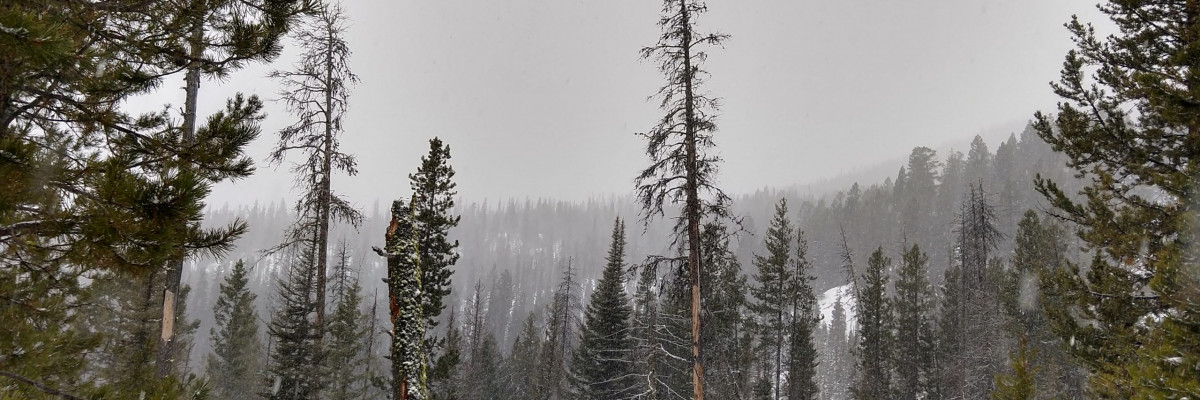The avalanche danger in the west central Montana backcountry is Considerable. Human triggered avalanches are likely, especially in wind loaded terrain.
Good morning; this is Jeff Carty with the West Central Montana Avalanche Center’s avalanche advisory for December 31, 2020. This advisory does not apply to operating ski areas, expires at midnight tonight, and is the sole responsibility of the U.S. Forest Service.
Weather and Snowpack
Mountain temperatures are 18-29º F this morning and are forecast to reach the low 30’s today. 7″ to 14” of snow has fallen in the last 24 hours. 1”-3″ more is expected today. Winds have been moderate with strong gusts and are expected to reach 13mph with gusts to 25mph today.
New snow and wind slab are falling on extensive surface hoar and near surface facets that developed during the high pressure over the weekend. These are very weak, slippery layers that will become more reactive with increased load and may slide on lower angle slopes than other problem layers. They have the potential to propagate long distances and the potential size of avalanches will increase with further loading and consolidation. Remotely triggered avalanches are possible.
The underlying snowpack is varied throughout the forecast area. Deeper areas have better bonding and instabilities are isolated to the new snow/old snow interface. The central Bitterroot has been the most stable zone in the past week.
In shallow areas, generally under 5 feet in depth, the snowpack structure is still poor. Facets and crust combinations are propagating in stability tests. These are becoming a low likelihood high consequence problem as persistent weak layers get buried deeper. However, wind slab or storm slab avalanches may be able to trigger avalanches on these deeper layers.
Lolo Pass had two concerning faceted layers Monday, 8” and 31” deep, that are currently being buried deeper. These exist on multiple aspects.
A natural avalanche was reported in the Swans Monday. This area had extensive faceting before Christmas and tests on Pyramid Peak were failing on buried facets. This area received the most snow in the past 24 hours and has the highest hazard.
The southern Bitterroots, outside of Lost Trail has also had a shallower, faceted snowpack.
Bottom Line
Extensive surface hoar is being loaded by new snow and wind creating dangerous avalanche conditions. The size and likelihood of potential avalanches will increase throughout the day with further loading. In some areas, storm and wind slab have the potential to trigger deeper avalanches. Stay on slopes under 30º, avoid traveling under avalanche slopes. Travel one at a time in avalanche terrain, carry a beacon, shovel, and probe. Re-assess conditions throughout the day and stay alert for signs of instability. Look for red flags.
Public Observations
Thank you to everyone who has taken the time to send in a public observation. Please keep sharing what you find and see while out in the backcountry. This is a great resource to glean information about current conditions. Here is the link to Public Observations.
Ski and ride safe.














